There is no other city in the world like Istanbul.
Not even one that remotely resembles it.
It sounds like an idiom that applies in many other cases.
But these seemingly empty words take on their full meaning and force in Istanbul. For its geographic location, for its rich history, for the majesty of its monuments, for its vibrant rhythm of life and so much more.
Istanbul is simply the dream of every traveler who wants to explore destinations full of personality.
So, if you like to travel, Istanbul is one of those cities you should visit at least once in your life… although to discover it completely, you would need a lifetime.
One of the great charms of Istanbul lies precisely in its unique location: on both shores of the spectacular Bosphorus Strait.which is the natural frontier between Europe and Asia, between the West and the East.
Although in past centuries its core was on the European side, its progressive expansion has led to the Asian side reaching a similar extension and importance.
This Bosphorus Strait is between 0.7 km and 3.7 km wide, and is crossed by three bridges, two of which are in the city of Istanbul proper: the Fatih Sultan Mehmet and the Bosphorus Bridge, the latter being the closest to the center.
In addition, there are three other main bridges that cross the Golden HornThe Eurasia Tunnel, an estuary that runs along the European side and flows into the Bosphorus Strait.
It also has the Eurasia tunnel, underwater, located at the southernmost point of the strait.
In any case, one of the most common and popular ways to cross from one side to the other is through its numerous ferries or ferries.
Another geographic peculiarity of Istanbul is its orography, based on different hills and different hillsThis is a curious parallelism with the city that inspired it centuries ago: Rome.
Administratively, Istanbul is capital of the homonymous province, which is also part of the Marmara region. Marmara regionone of the 7 in which Turkey is divided.
The city has an estimated population of more than 15 million inhabitants, making it the most populated city in the country, practically tripling the next one, the capital Ankara.
These are the approximate distances separating Istanbul from other major tourist destinations by road:
There is no doubt that Istanbul is the great gateway to Turkey, for several reasons: its undeniable tourist attraction that makes it an essential destination for millions of travelers, but also for its proximity to Europe and, above all, for its magnificent international transport facilities. its superb international transport facilities..
Estas son las diferentes formas que puedes explorar para llegar a Estambul desde tu país.
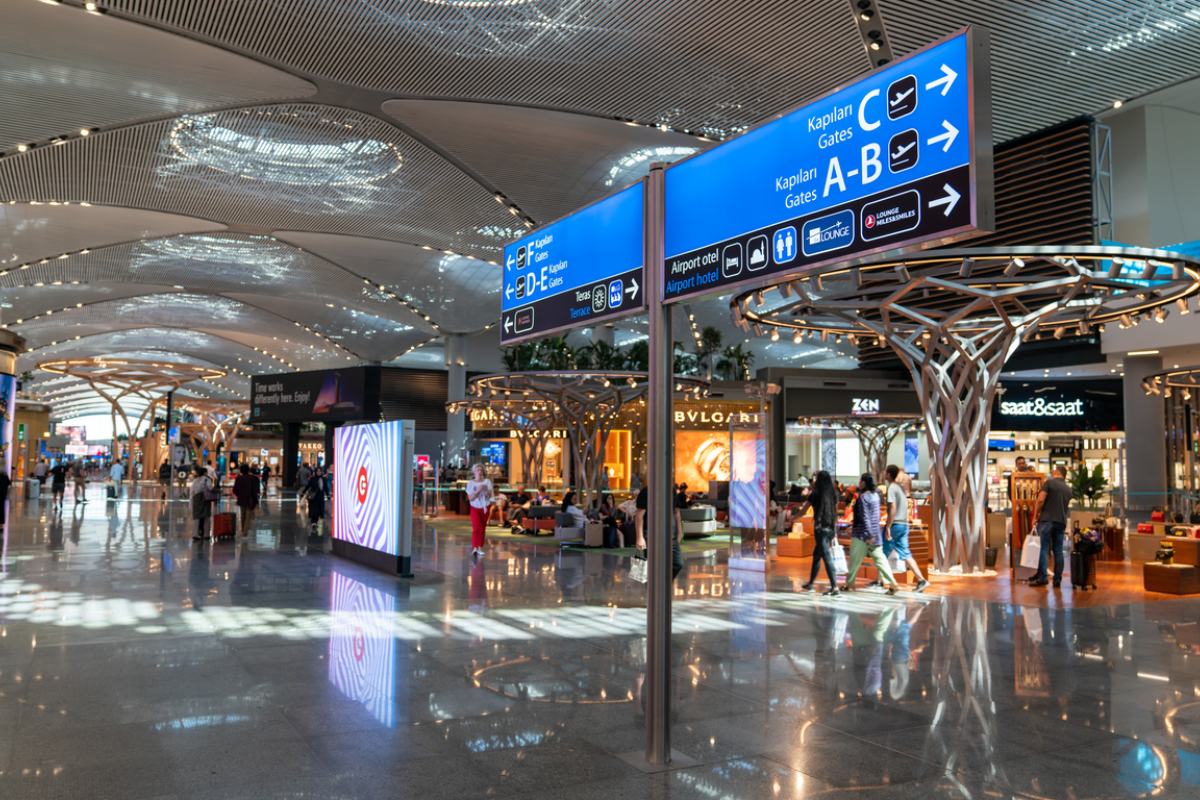
Istanbul is served by two international airports that serve the city’s inhabitants and tourists.
However, they differ from each other in their distance from the center:
Either through one or the other, Istanbul is connected to more than a hundred international destinations in Europe, the Middle East, Africa, Asia, North America, Latin America and even Oceania.
To find out which destinations the two airports are connected to, you can visit our How to get there page.
It is worth remembering that Atatürk International Airport is no longer offering service The airport has been replaced by Istanbul Airport for scheduled commercial flights, as its function has been replaced by Istanbul Airport.
Instead, it is only used for cargo, institutional and other flights.
If your option is to renting a car or hiring a private transfer in a vehicleThe options for entering Istanbul are numerous, as it is served by many highways coming from other major cities in the country or even from other countries, in the case of the European part.
The main highways leading into the city are:
The option of arriving by bus to Istanbul is feasible for those who are traveling from other Turkish cities and for those who travel from some of Turkey’s neighboring countries, such as Bulgaria and Greecealthough the options are limited.
The main bus stations in Istanbul are:
The small but modern high-speed rail network high-speed known as YHT (Yuksek Hizli Treni YHT (Yuksek Hizli Treni)has Istanbul as a major hub.
Its main station is Istanbul Söğütlüçeşmewhich acts as the head of two lines that run through the country.
They are:
On the other hand, if you are looking to reach Istanbul from another country by overnight and international sleeper trains overnight and international sleeper trainsthere are two possible options:
Another gateway for travelers to Istanbul is at its new port, Galataport new port, GalataportThe new terminal is a spectacular and modern infrastructure that has revitalized its surroundings (Karaköy or Galata).
One of the interesting aspects is its integration into the environment, as the passenger terminal is actually located underground.
It is here that the large cruise ships that arrive in the city disembark, most of which are of a private nature and not of a regular line.
To understand a city as complex as Istanbul, it is essential to know its history, since what we see today is the sum of all civilizations. sum of all the civilizations that have passed through here.
As is logical, the one that has had the greatest weight is the Ottoman, but before its rise to power, many other episodes that have shaped the current city occurred here.
And it is necessary to know them.
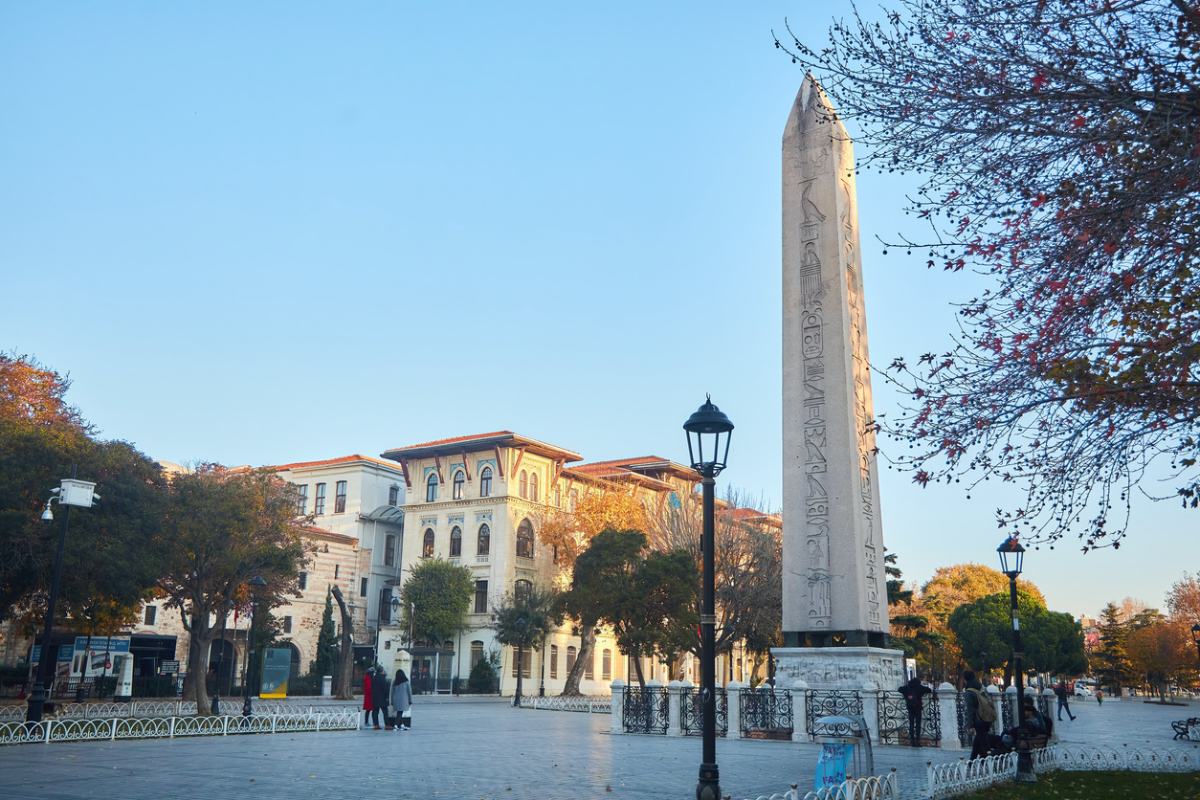
The foundation of the city dates back, according to the legend, to 667 B.C.It was settlers from Megara (near Athens) who established themselves here, in a town they called Byzantium.
Undoubtedly, they had a vision of the future, for they exploited from the beginning its strategic position, charging tolls for passage through the Bosphorus Strait.
And that made the Persians set their eyes on it, as early as the 6th century BC, even taking it, albeit for a brief period.
In the centuries that followed, it developed a productive alliance with Rome, maintaining a status of some freedom even after being incorporated into the Empire (1st century A.D.)..
Pero las posteriores luchas de poder y la guerra civil provocaron su destrucción: fue Septimio Severo (finales del siglo II) quien la sitió y arrasó… aunque también se encargó de su reconstrucción, sabedor de su importancia estratégica.
But the real refoundation refounding of the city can be attributed to ConstantineThe first Christian emperor who, in a new civil war, became the sole ruler of the Empire (previously a Tetrarchy had been decreed).
This victorious emperor decided to move the capital to the place where his final victory had taken place, that is, on the banks of the Bosporus and who knows if because here too there are seven hills, as in Rome.
It was a project that was little less than pharaonic, expanding walls, hippodrome and all kinds of infrastructure.
It was inaugurated in 330 with the official name of New Rome, but everyone came to know it as Constantinople, that is, the city of Constantine.
Its growth was unstoppable also with the following emperors and, above all, since it remained as a great center of power after the fall of the Western Roman Empire: now only the Eastern one remained standing, renamed as Byzantine Empirewith Constantinople as its capital.
Emperors such as Theodosius II and, above all, JustinianThey reinforced its defensive system and infrastructures, and embellished the city to the unimaginable, promoting the construction of spectacular basilicas, by first-rate architects such as Antemius of Tralles and Isidore of Miletus.
Those of Hagia Sophia and of Saints Sergius and Bacchus (today, Aya Sofya and Little Aya Sofya) are the best example of this.
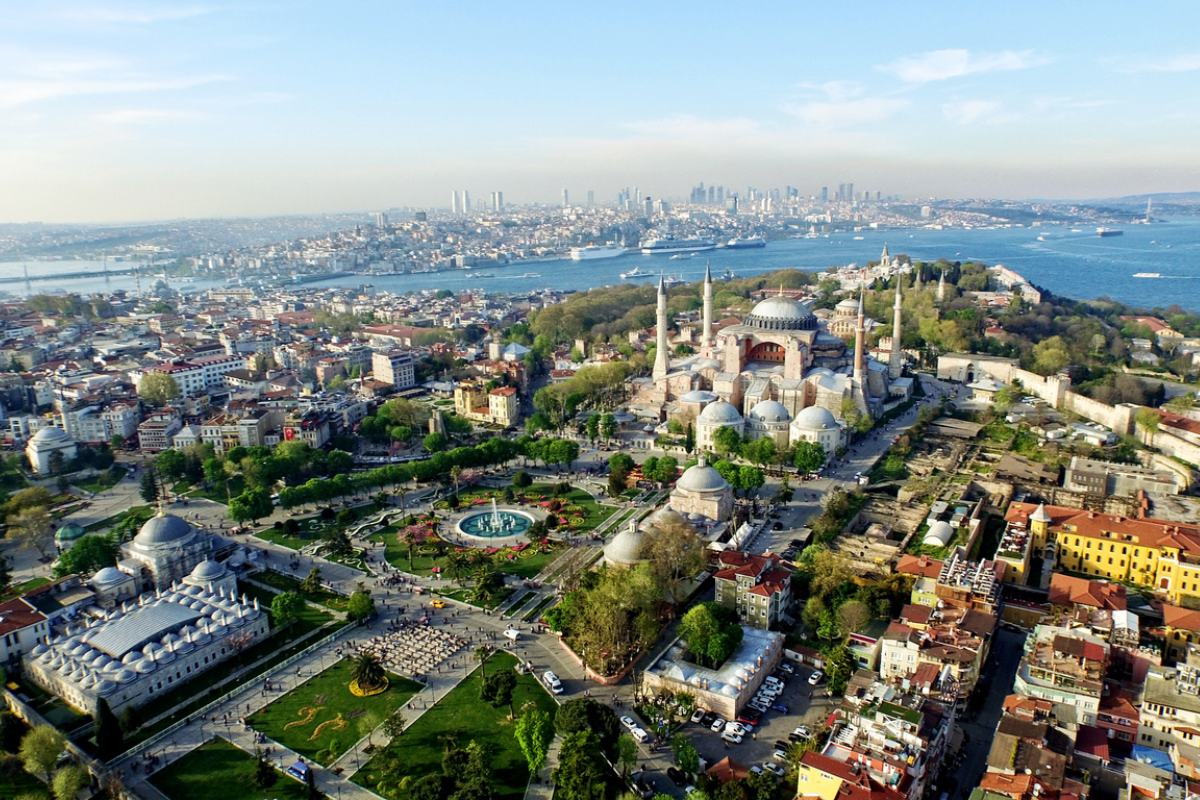
Although the period of splendor of the 6th century with Justinian did not have its replica afterwards, the following centuries kept Constantinople as the great Christian, political and economic reference point in the area. Christian, political and economic reference of the area..
Y en ella pusieron sus miras los principales imperios que se formaron después: el árabe, que trató de conquistar sin éxito la ciudad en varias ocasiones, o el selyúcida (antecesor del posterior otomano).
Another type of struggle was also posed by the naval powers coming from the western Mediterranean, especially Venice, which was disputing their domination of the trade routes. domination of the area’s trade routes. Constantinople was a strategic hub for the trade and distribution of important raw materials in the West, such as wheat and, above all, spices.
In addition, another issue placed Constantinople on the geostrategic map: the Crusades.
Su posición como lugar de paso y avituallamiento de los, en teoría, aliados cristianos hizo que muchos recalaran aquí en los siglos X y XI.
Sin embargo, al comienzo de la siguiente centuria (1204) the troops of the Fourth Crusade (under the command of the Doge of Venice) provoked one of the saddest episodes of its history: the Siege of ConstantinopleThe loss of heritage from that episode is still evident in many of the archaeological remains of the city, which ended in its total sacking, a consequence of strong disagreements between them and Emperor Alexius IV.
The patrimonial loss of that episode is still evident in many of the archaeological remains of the city.
Constantinople, from then on, had greater difficulties in guaranteeing the defense of its territory.
Nevertheless, it continued to be host city for foreign settlersThe Genoese, another maritime power of the time, built a citadel and a watchtower, the Galata Tower, as a good example of this.
The presence of numerous Venetians, Greeks, Armenians and people of other origins is also documented.
But if 1204 was a fateful year for Constantinople, worse (from the Christian point of view) was 1453: it was the date of the definitive fall of this city to Muslim hands, specifically those of the Ottoman Empire, which had been founded a century and a half earlier and whose main objective was the conquest of this strategic city, encircling it on several occasions before.
In fact, it made it its capital just after taking it, with the name of Istanbulthe court from the previous one, Edirne.
The sultan who was able to hang that medal on his head was Mehmed IIwho was just over 20 years old at the time, and who developed a bold strategy to circumvent the sea and land defenses of the Byzantine defenders.
The last Byzantine emperor, Constantine XI Paleologus, died in this defense.
Mehmed II, on the other hand, developed a policy of welcoming Christians, including the Genoese of Galata, and promoted an ambitious reconstruction of the city. reconstruction of the city.
Le siguieron otros sultanes, destacando quizás Suleiman the Magnificentwho enlisted the services of one of the most important architects in history: Mimar SinanHe was the author of numerous mosques that today are among the most visited.
The Topkapi Palace became the great center of power of the empire and the open-door policy was maintained, Istanbul being the destination of thousands and thousands of Serfardic Jews expelled from the Iberian Peninsula.
But as in all empires and great civilizations, when a zenith is reached, a progressive period of decline begins.
And in the case of the Ottoman Empire, it lasted several centuries, but it was relentless: it was a giant with feet of clay and with difficulties to manage such a vast territory, although Istanbul escaped it to some extent because it was the seat of the court and the place of residence of the highest classes of the empire.
Palaces such as Dolmabahçe and Beylerbeyi, both built in the 19th century near the Bosphorus, do not indicate this decline, but they do indicate the growing European influence on the growing European influence on the concept of in the concept of government and economic development at the time.
The winds of renewal were increasingly powerful at the beginning of the 20th century and the defeat in the First World War (1914-1919) was practically the final straw for the demise of the Ottoman Empire, although Turkish patriotism smiled again soon after with the victory in the Greco-Turkish War (1919-1922).
That optimism elevated the strong figure of the moment, General Mustafa Kemal, known as Atatürk… who, nevertheless, took took the capital to Ankara, which dealt a severe economic blow to Istanbul.
This was a breeding ground for a few decades of certain discontent and social conflict in the city, including military pronouncements.
And out of this situation emerged, once again, a strong figure, in this case Tayyip Recep Erdogana native of this city, who began his political career as mayor of Istanbul and later became President of Turkey.
Today, Istanbul is a megacity that relies on major infrastructure projects. infrastructure projects of the State (new airport, new cruise port, etc.) infrastructure projects (new airport, new cruise port, etc.) and a growing tourism tourism sector, which is becoming more and more to become the image and hallmark of the new, modern Turkey.
And all this without eradicating the social inequalities in its different neighborhoods or forgetting the permanent fear of earth tremors, which has already caused major earthquakes in the past, posing an engineering challenge for institutions and private builders.
There is so much to see in Istanbul.
So much, that in one day it is impossible to see it all… but the same would be true in a week.
Therefore, it is important to be clear about what are your main points of interest in order to prioritize and not to miss the important things.
Below we list the places to see in Istanbul according to their neighborhood or area, which will help you understand how to organize the program of visits.
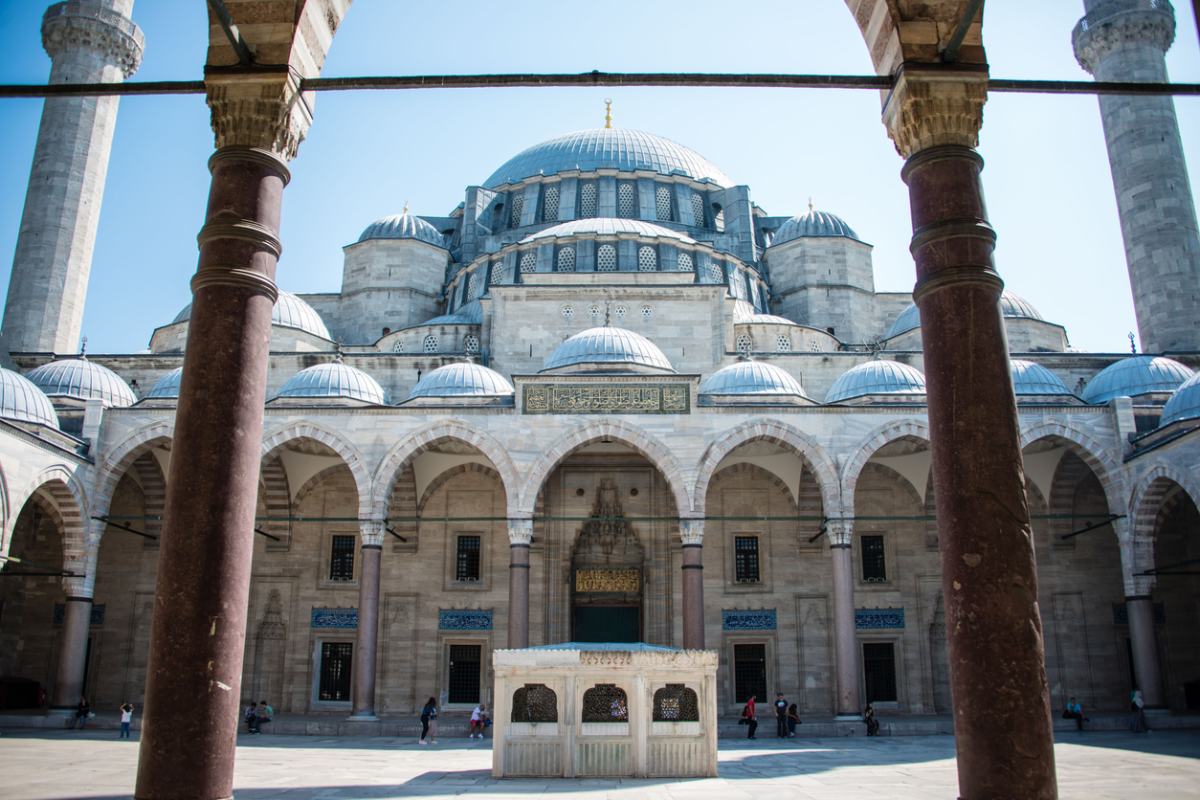
The Old City, also sometimes called the Old Peninsula because it is a space surrounded by water on its northern (estuary of the Golden Horn), eastern (Bosphorus Strait) and southern (Sea of Marmara) sides, is the area of the city where the ancient core of Istanbul is located.
That is, what was the Greek Byzantium, later Constantinople with the Roman and Byzantine empires, and definitely Istanbul with the Ottoman Empire.
Here, in fact, is what is considered the ‘nerve center’ of the city: the Sultanahmet SquareThe place for meetings, events and much more.
As the Ottoman Empire was the last of the great powers that dominated this city, most of the points of interest are related to it.
Specifically, mosquesThere are numerous and perfectly recognizable, for its peculiar style of centralized plant and slender minarets with conical tips at the ends.
And all of them are interesting, but for historical and aesthetic reasons, the most visited by travelers are:
Not all the great monuments of the Ottoman era are mosques.
In fact, one of the must-see and iconic sites is the Topkapi Palacewhich was the center of power of the sultans since the fifteenth century, shortly after the fall of Constantinople in Ottoman hands.
It is a large complex with courtyards and green spaces, where the traveler can understand the grandeur of that empire and the luxury of the court, not without excesses: harem, the Imperial Treasury or the Audience Hall are some spaces that account for it.
Another interesting vestige of the Ottoman era that are often part of the tourist tours is the Sultan Ahmet III Fountainpromoted in the 18th century by one of the rulers who most promoted culture in the city.
It is not the only ornamental and monumental fountain in the center: it is also worth mentioning the German FountainThe German Fountain, in the same Sultanahmet Square, has a very different history, as it was a gift from this country and its emperor (William II), then a strategic ally, to commemorate his official visit to the city in the late nineteenth century.
But travelers with an interest in Istanbul’s pre-Ottoman era will also find numerous vestiges in the old city.
Without going any further, Sultanahmet Square was the ancient hippodrome of Constantinople It is enough to look at its layout and make an exercise of imagination to understand it.
This is also helped by the three main surviving elements of that period: the Obelisk of Theodosius (which actually dates from the period of the Egyptian pharaoh Thutmose III and was brought here by the Roman emperor after whom it was named), the Column of Constantine (in honor of the emperor who refounded the city) and the Serpentine Column (one of the few vestiges of Greek Byzantium, from the 5th century BC).
In addition, one of the most surprising places to visit, halfway between an archaeological site and an artistic monument, is the Basilica Cistern.
And of course, another unmistakable attraction of the old city of Istanbul is its bazaars. bazaarsIn these bazaars the traveler can lose himself for hours and hours, letting himself be carried away by his senses: the sight to delight in their colors and shapes, the taste to savor the delights of Turkish gastronomy, the smell for the unmistakable aroma that awakens the goods sold (whether food or not), the touch to enjoy the softness of certain products and the ear for the unmistakable sound of its merchants and buyers.
Of all these bazaars, the most outstanding one is undoubtedly the Grand Bazaarconsidered one of the largest in the world and that has its origins in the fifteenth century, shortly after Constantinople became Istanbul.
It is estimated that it has more than 3,500 stores and receives about 300,000 visitors a day, including tourists and Istanbulites.
No less interesting is the Egyptian Bazaar or the Spice Bazaarso called because that is the main genre on sale, although not the only one.
Undoubtedly, a space that takes us back to the past, when these products were considered luxury items, but also introduces us to the present of Turkish cuisine.
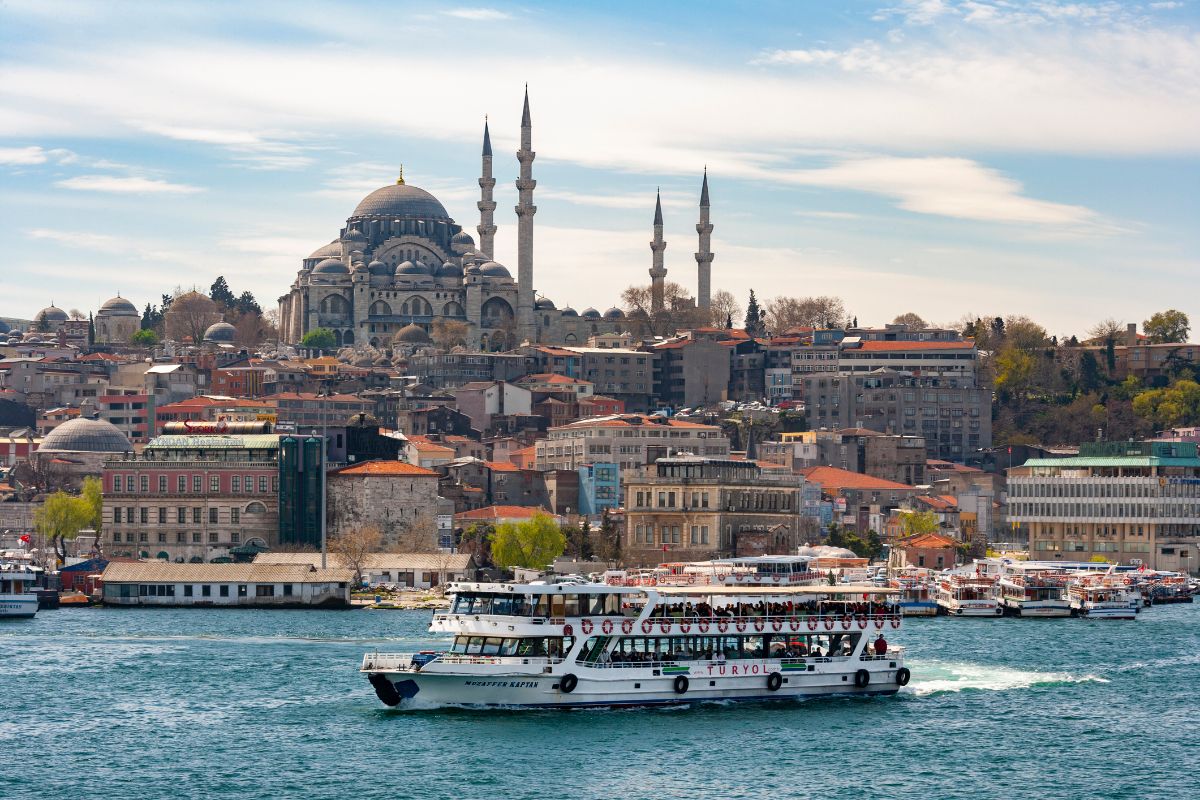
By Bosphorus is meant the area on both shores of this strait, north of the old city and Galata..
Tierra adentro, existen lugares de interés menos conocidos.
Pero desde el punto de vista turístico, lo verdaderamente interesante es navegar por las aguas de esta vía marítima a bordo de un crucero local y deleitarse con los encantos que aparecen en primera línea, elevándose imponentes y majestuosos.
Famous here are the yaliwhich are residential buildings of the high society.
Some of them were built as early as the 18th century, but the most unique are from the 19th century, built here thanks to the investment of the wealthy classes, who wanted to retire from the city without going too far away from it.
The most picturesque are made of wood and have several floors.
Others are built in a more eclectic and classic style, of European influence.
This is the case of the Beylerbeyi PalaceIt was the resting place of the Ottoman sultans and a place of welcome for great political leaders during their visit to the city.
Another good example is the Dolmabahçe PalaceThe Dolmabahçe Palace, the maximum exponent of the Ottoman sumptuousness in the 19th century and of the European classicist influence, with interiors of enormous refinement, with spectacular collections of art and luxury craftsmanship.
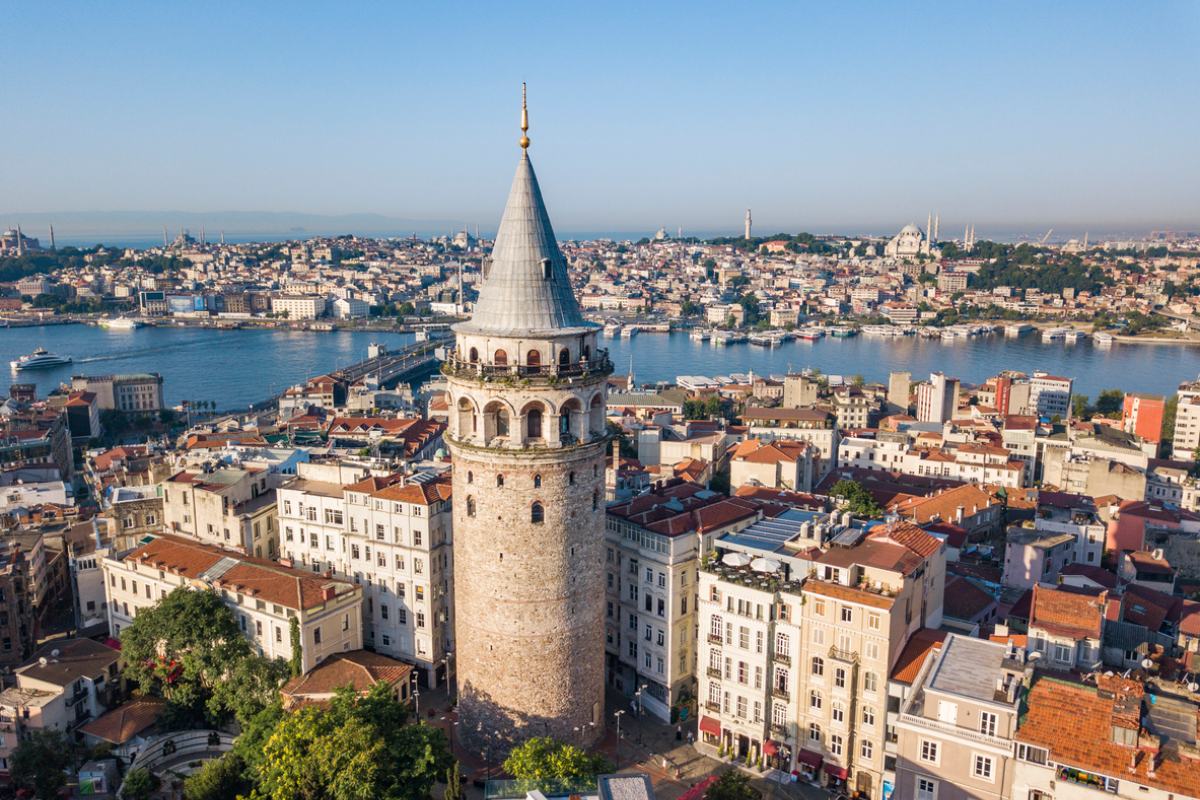
If the old city, south of the Golden Horn, can be considered the most monumental and historical area, the one north of the estuary can be considered the most popular and lively from the social point of view.
Here there are different neighborhoods, each with its own personality, where wandering aimlessly is sometimes the best possible plan.
The most famous neighborhood is perhaps Galatawhich is now known as Karakoy.
En su origen, fue una colonia de genoveses que se establecieron aquí en el siglo XIII, en tiempos aún de la Constantinopla bizantina.
Aunque poco queda de la ciudadela levantada por ellos, sigue en pie y bien erguida la Torre de Galata, monumento más sobresaliente de aquel periodo y de la zona.
Una torre que se puede visitar y subir hasta su cima, regalando así las mejores vistas de la ciudad, en especial de la península antigua al otro lado del Cuerno de Oro.
On the other hand Beyoglu can be considered the westernmost area of the city, where some of Istanbul’s main fashion stores and entertainment and dining venues are concentrated, as well as some embassies and art galleries.
Next to Beyoglu is TaksimAnother area that stands out for its modernity and atmosphere that enchants tourists.
From this square arises the most commercial street of the city, Istikkal Caddesiwhich congregates Istanbulites and tourists at any time of the day and night.
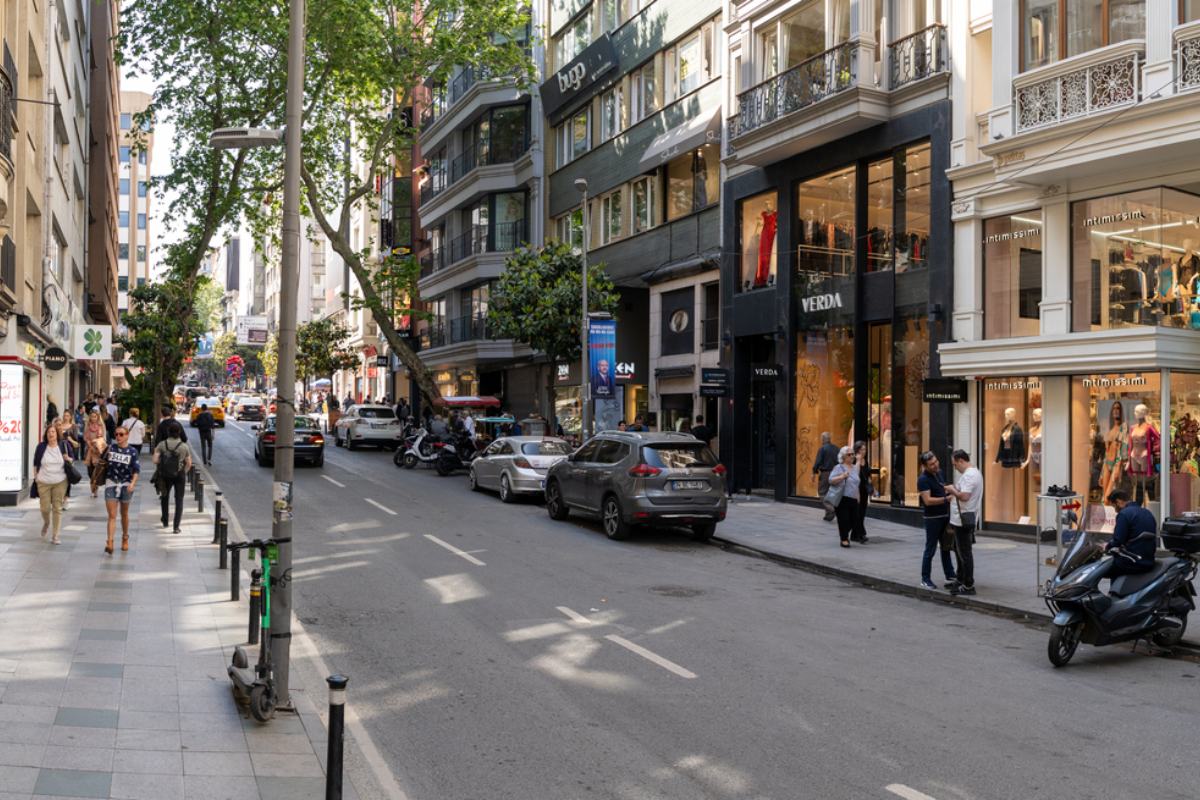
Istanbul does not end there, far from it, but encompasses many other neighborhoods, both on the European and Asian side, which are worth getting lost and browsing through if you have the time.
Some of them are:
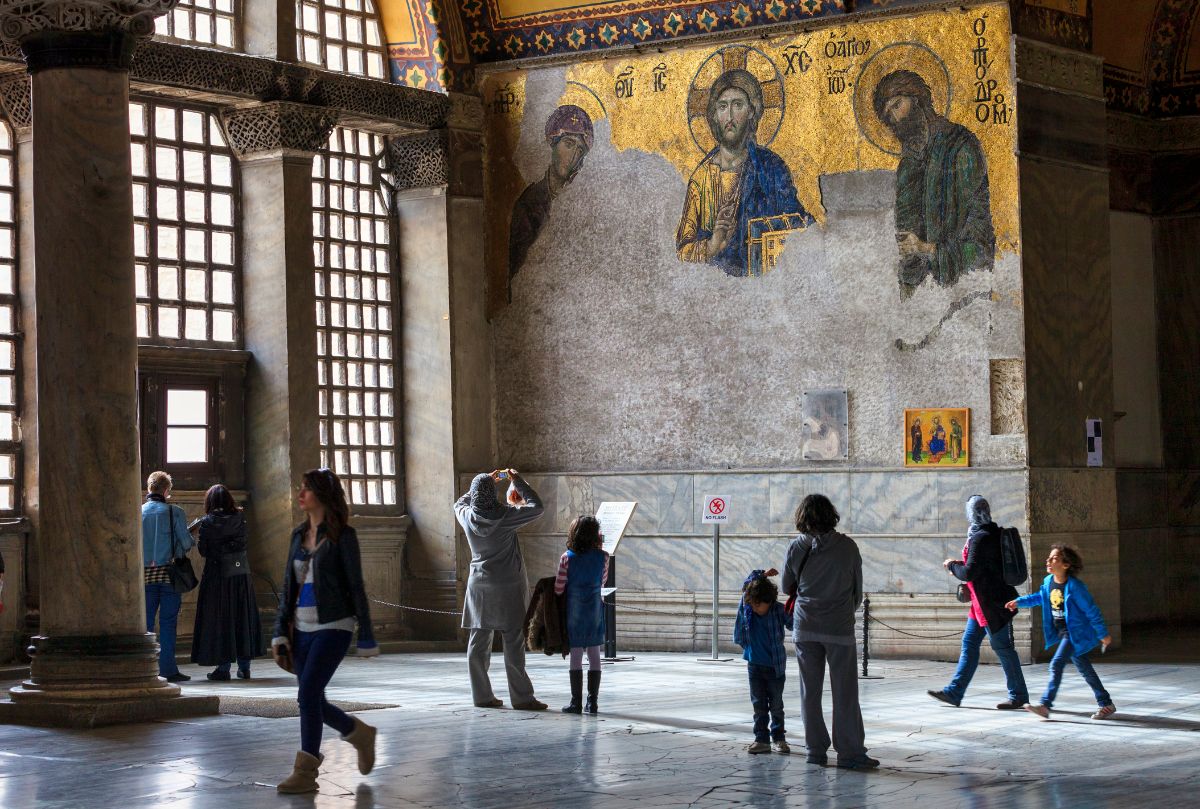
Getting bored in Istanbul is something really complicated: it offers so many plans and so varied, that you will always find something to do adapted to your profile.
In addition, these plans are widely spread throughout the different neighborhoods of the city, so it will be an excuse to move and get out of the usual tourist routes.
At the cultural level, museums museums Istanbul are of enormous interest and are among the best in the country.
The most outstanding are:
In the field of festivalsIstanbul also has a lot to offer.
These have very specific dates of celebration, but if you are lucky enough that your trip coincides with them, you can take advantage of them to enrich your stay in the city.
Among the most renowned festivals are:
The gastronomyTurkish cuisine, as in the rest of the country, is another attraction for many travelers.
Turkish cuisine enjoys great prestige in the Middle East, to the point of inspiring the recipes of all its neighbors.
The areas where you can best unleash your culinary pleasure are the surroundings of Taksim and Beyoglu in general, as well as the Galata Bridge.
Shopping shopping Istanbul is quite an experience, since you will be able to buy a wide variety of items.
If you are looking for traditional crafts and products made with heart, you can go to the Grand Bazaar.
On the other hand, if you are looking for more sophisticated and contemporary shopping, whether it is fashion, accessories or design, a good option is to go to Istikkal Caddesi and its surrounding streets.
The nightlife of Istanbul is probably the liveliest of all Turkey, with permission of some coastal holiday destinations.
Nisantasi is one of the neighborhoods with the highest concentration of this type of atmosphere.
Special mention deserves the Galataport area, renovated in the heat of this spectacular port, where you can find the most chic and select locals in the city.
No one is unaware that one of the great attractions of Turkey in general and of Istanbul in particular are its hammams. hammams or Turkish baths.
In this city you will find numerous places where you can relax thanks to its pools at different temperatures, where wellness and health services are also offered, such as massages and skin treatments.
And finally, a proposal that also appeals to many people: soccer. soccer.
Estambul es probablemente una de las ciudades más futboleras del mundo, como demuestra el hecho de haber sido la sede de dos finales de Champions League, concretamente en el estadio Atatürk.
Fue en 2005 (entre el Milan y el Liverpool, con victoria de estos últimos) y en 2023 (entre el Inter y el Manchester City, también con victoria inglesa).
The aforementioned Olympic stadium is the venue for the matches of the Turkish National Team (and the club Fatih Karagümrük SK).
On the other hand, the three big soccer clubs in the city (and that every football fan knows) are Beşiktaş, Fenerbahçe and Galatasaray, which have their own stadiums: the Vodafone Park, the Ulker Fenerbahce Sukru Saracoglu Stadium and the RAMS Park.
Watching a match in any of them is an experience, as their fans are noted for the passion with which they cheer for their respective teams.
In order to explore Istanbul freely, you will need to know some useful information.
We present them below.
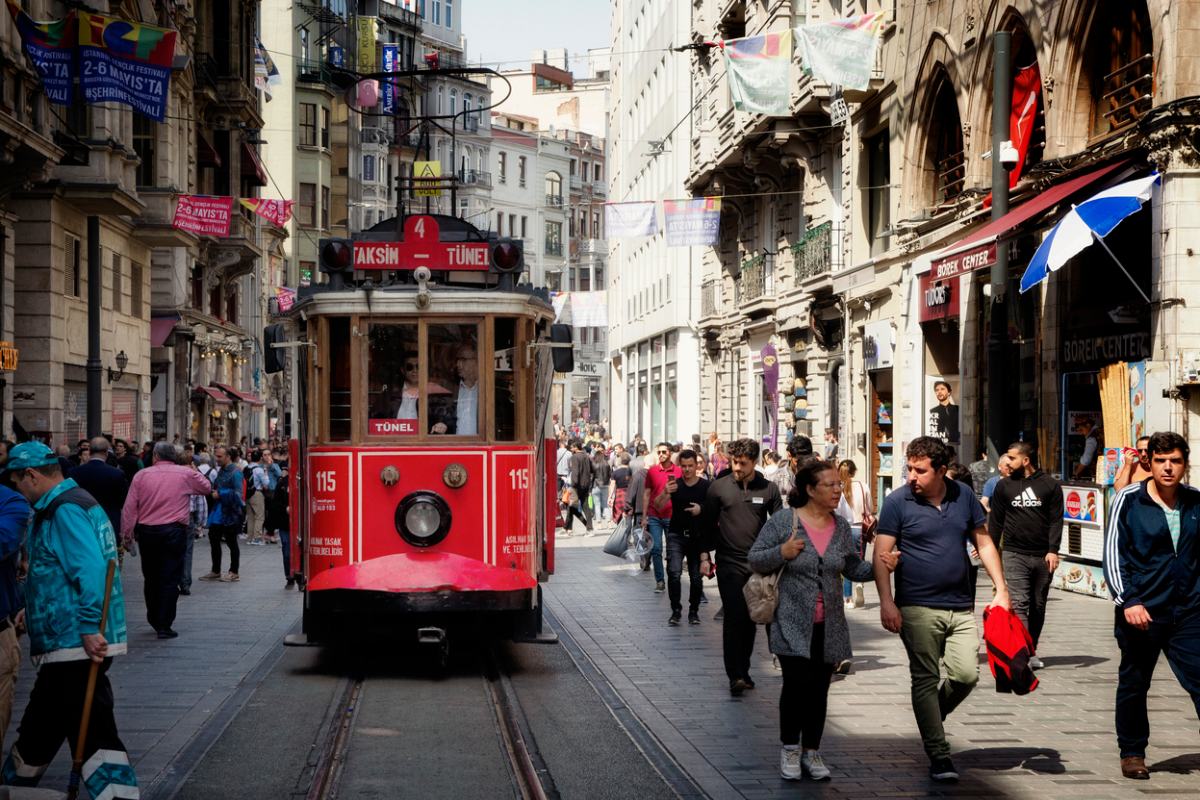
Istanbul is a very large and densely populated city, to which must be added the millions of tourists it receives each year.
As a result, it has had to develop a public transport system that meets the mobility needs of those who pass through.
And although it is probably insufficient at certain times, as indicated by the moments of congestion that test the patience of more than one, the truth is that the options for moving freely around the city are varied.
This is a list of public transportation systems that you can take into account:
For any other information that is not on this page, you can go to one of the tourist offices, which are located at strategic points of the city. strategic points of the city.
The main ones are:








